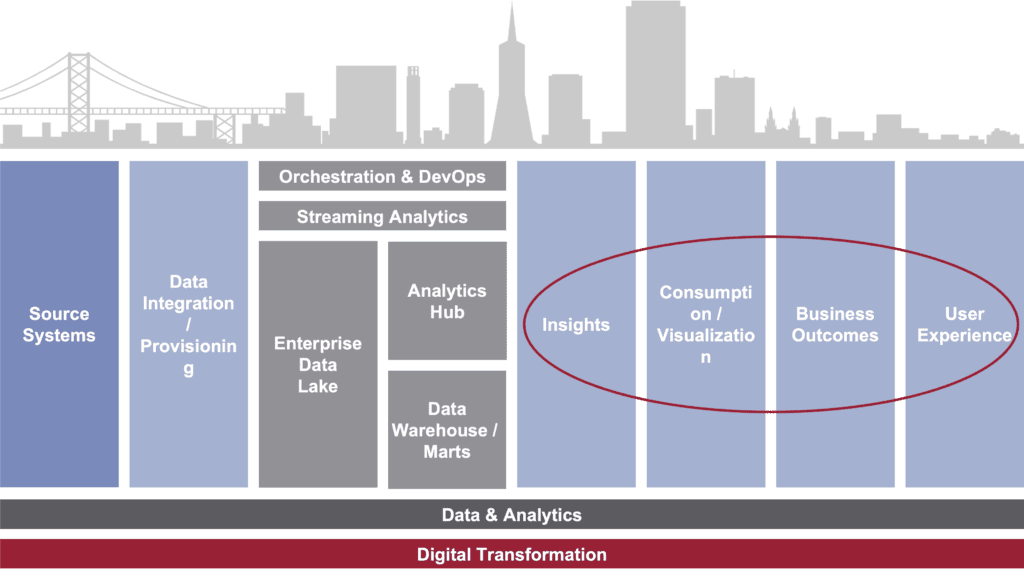
By Azmath Pasha, Chief Digital Officer
For the original article, published on Forbes.com, click here.
In the world of digital transformation, trends in data and analytics are having a disruptive impact across all industries.
Being a chief digital officer (CDO) in the digital space, my goal is to help make the digital revolution an opportunity for all of my customers and to provide a bridge between technology and society. Making that transformational shift requires harnessing the power of data, driving service excellence, focusing on the customer and delivering products in an agile manner.
According to an Everest Group study, “73% of enterprises failed to realize sustained returns on their digital investments.” Frequent business interruptions and economic inflations are fueling newer business opportunities, leading organizations to create, process and manage newer data assets. It’s critical that the quality of such data is trustworthy in making effective decisions.

Enabling such trustworthiness would mean requirements such as:
- Significant time from data subject matter experts (SMEs) in determining measurement rules.
- Additional efforts from data engineering and development teams to implement heuristics with measurement rules and capture outcomes.
- Reprioritization of existing initiatives to meet business demands at a faster pace.
Harnessing the power of data helps infuse artificial intelligence (AI) with expanded computation power and considers a cloud-native technology trend for extracting value-added benefits, ultimately enabling near-real-time insights and personalization. AI-driven digital intelligence helps service and sales models strategize based on convenience and inspiration for internal and external customers, delivering improved insights and retention.
AI and analytics enable greater agility for consumer needs and help to effectively evaluate new ways to drive product innovation and market launch. Keeping the customer at the forefront — understanding consumer behavior through analysis of social, internal and external data — is key to drumming up effective customer engagement.
Let’s look at some of the key approaches that need to be enabled for data and analytics to foster disruption with digital transformation:
- Embark on a transformation journey with a mindset of thinking big, starting small and scaling fast.
- Increase connections with more than 1 billion consumers via meaningful, relevant dialogue.
- Use several digital ecosystem capabilities (social and business analytics, e-commerce support, website management, social media management, etc.).
- Transform a model based on insights — develop data-driven strategies and insights for campaign planning.
- Centralize data and define a services catalog optimized and industrialized with insightful services that are faster, better and cheaper.
- Blend data and business intelligence (BI) activities into an analytics center of excellence (COE).
- Integrate data sources and analytics for real-time insights and recommendations to people-related questions.
- Industrialize an integrated “hub and spoke” model through a partner ecosystem.
Doing the above can be a benefit in the long run, future-proofing for advantages such as:
- Embarking on a three-year transformation program with a single template across business functions globally.
- Developing more customer-centric marketing plans leveraging real-time insights.
- Better decision-making based on customers using data-driven insights to support customer trends, campaign planning, market and competitor insights and unplanned events.
- Better information enabling process improvements (e.g., speed to market, channel analysis, consumer insights that support planning for consumer trends, campaign planning, market, competitor insights and unplanned events).
Let’s imagine we are in 2022 — post-pandemic, where most organizations have started or are well on their digital transformation journeys. Digital leadership teams will have to implement serious guardrails and well-defined plans of action. These plans should not be limited to just platforms, tools and social networks, but they should enable resiliency to keep thriving and driving insights by:
- Reducing complexity and costs by embarking on programs like data estate modernization, data platform managed services and financial transformation.
- Increasing transparency by setting up an analytics COE and experimenting in a sandbox environment.
- Improving execution by adapting to AI-driven infusion powered by hyper-personalization.
Steve Jobs once said: “Innovation is the ability to see opportunity — not a threat.” Based on experience and best practice, digital transformation is 60% mindset, 25% methodologies, 10% tools and 5% other. A high degree of digital transformation brings about challenges and, depending upon the organizational structure, can change or heavily impact a business unit’s status quo (think resources, internal and external stakeholder support, and strategies to launch quickly and successfully).
Organizations can overcome these challenges by influencing and empowering others with insights-driven information that enables day-to-day data consumption needs. Engaging a robust governance model and appointing digital transformation stewards to experiment and promote these data-driven outcomes is also recommended. This will, however, all depend on how susceptible individual lines of business are to the change and how quickly they are willing to adapt.
What should a CDO’s vision be for transforming organizations into intelligent enterprises? Enterprises need to define and enable a data-led approach, leveraging cloud for next-gen data platforms and analytics. Embedding and evolving a decision science and insights-driven culture alongside monetizing data assets can unlock value through new business models. Lastly, the key to building trusted data is managed governance and data lineage.
For the original article, published on Forbes.com, click here.

